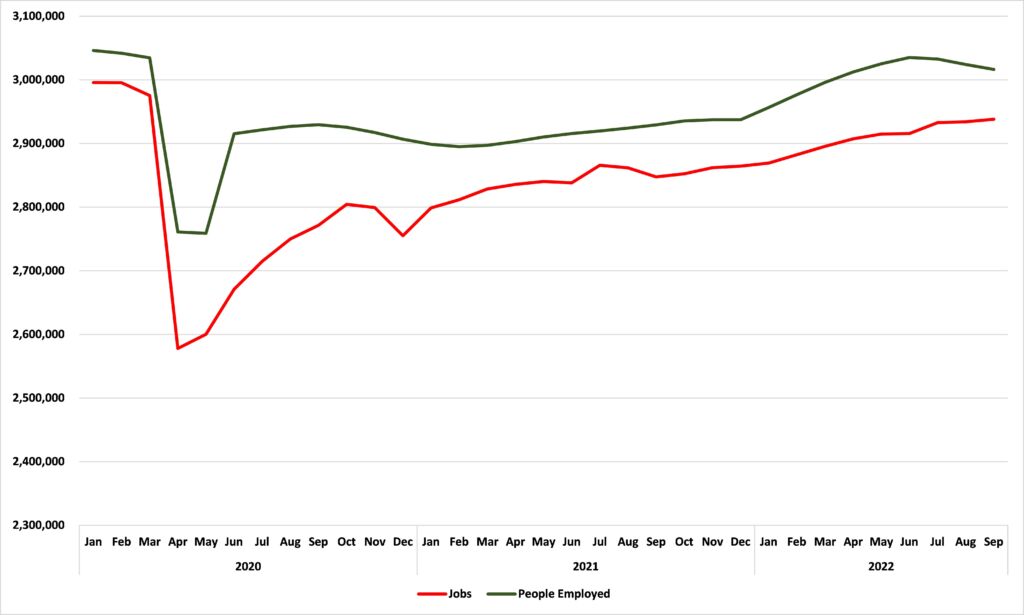The number of Minnesotans in employment falls for the third straight month
The employment figures for September are out and Minnesota’s media has lead with the figure for new jobs created in September, 4,200, the twelfth straight month of job growth:
Knox Radio: MN adding jobs to the workforce
KDUZ: MN sees job growth for 12 consecutive months
KSTP: DEED: September marked 12 straight months of job growth in Minnesota
KAALTV: Minnesota job growth reaches 12 consecutive months
Minneapolis/St. Paul Business Journal: Minnesota continues job growth in September despite ongoing tight labor market
But I’ve made the point previously that these numbers come from the the Establishment survey, which measures jobs. When we look at the Household survey, which measures the number of people employed, we see a rather different picture. In September, the number of people employed in Minnesota actually fell by 7,623. This was the third consecutive month that the number of Minnesotans employed fell, and there were 18,528 fewer Minnesotans working in September than there were in June, as Figure 1 shows.
Figure 1: Number of jobs (CES) and number of people employed (CPS) in Minnesota

The unemployment rate – which ticked up for the second straight month to 2.0% – only measures those Minnesotans in the labor force who are unemployed and looking for work. If you stop looking for work, you no longer count as unemployed and are no longer included in the labor force. That is why Minnesota’s labor force participation rate fell from 67.3% in June to 66.7% in September.
The explanation for the number of jobs rising at the same time as the number of people employed is falling is that more and more people are taking on second jobs to make ends meet. Bloomberg reports that:
Over half of working Americans have considered holding multiple jobs to pay their living expenses as inflation remained stubbornly high in September and real wages fell.
It is especially galling for ordinary Americans, then, when they read politicos using hideously distorted figures to tell them that everything is fine.